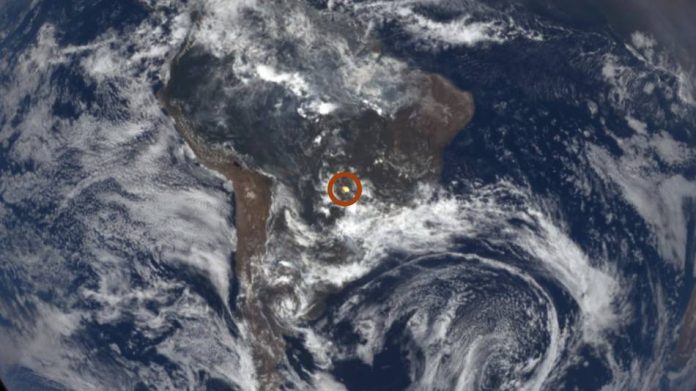NASA’s EPIC camera captures flashes of lights millions of miles above from space.
In 1990, when the Galileo satellite whipped around the Earth on its way to Jupiter, it caught sight of mysterious flashes of light coming from the surface of the Earth.
25 years later, the Deep Space Climate Observatory (DSCOVR), which is stuck out in space between the Earth and sun almost four times as far away from the planet as the moon, was also capturing these mysterious flashes of light. In fact, DSCOVR captured more than 800 of these flashes between 2015 and 2016, and scientists have figured out what they are.
The puzzle was solved by Alexander Marshak, DSCOVR deputy project scientist at NASA’s Goddard Space Flight Center.
He had noticed the flashes sometimes showing up over oceans while he looked through images from the observatory’s on-board camera, Earth Polychromatic Imaging Camera (EPIC).
He wasn’t the first to notice, though. Originally, astronomer Carl Sagan, noticed the glint over the planet’s oceans from studying images from that Galileo flight, and surmised they were the sunlight reflecting off the ocean.
And when the public started noticing and inquiring about what the flashes of light may be, they emailed Marshak, who was listed as the person of contact for questions regarding the EPIC camera images.
So Marshak went back and looked at the Galileo images as well as the images from EPIC.
“We found quite a few very bright flashes over land as well,” he said. “When I first saw it I thought maybe there was some water there, or a lake the sun reflects off of. But the glint is pretty big, so it wasn’t that.”
Since it seemed like bodies of water were not the source of the flash, Marshak joined forces with Tamas Varnai of the University of Maryland, Baltimore County, and Alexander Kostinski of Michigan Technological University, using date from EPIC to figure it out.
So what is it? Nearly horizontal ice particles in cirrus clouds that are 3- to 5-miles high up in the atmosphere. That’s the conclusion from works published in Geophysical Research Letters.
So mystery solved, and now what to do with this information.
First, scientists can try and figure out how often these ice crystals form, and to see if they can be used in calculations of how much of the sun’s energy are reflected back into space.
Down the road, a similar observational approach could potentially help scientists determine if distant exoplanets have the same sort of reflection, meaning the planets could have an atmosphere, and worth further inspection as a potential home for future generations of humankind.
The satellite DSCOVR launched from Cape Canaveral aboard a SpaceX Falcon 9 rocket on Feb. 11, 2015. It’s an NOAA satellite that was originally designed for NASA for a mission called Triana, but scrapped for years, until it was determined to be the right fit for both the NOAA and Air Force needs. It is in an orbit about 1 million miles from Earth (the moon is on average only 238,900 miles away).















